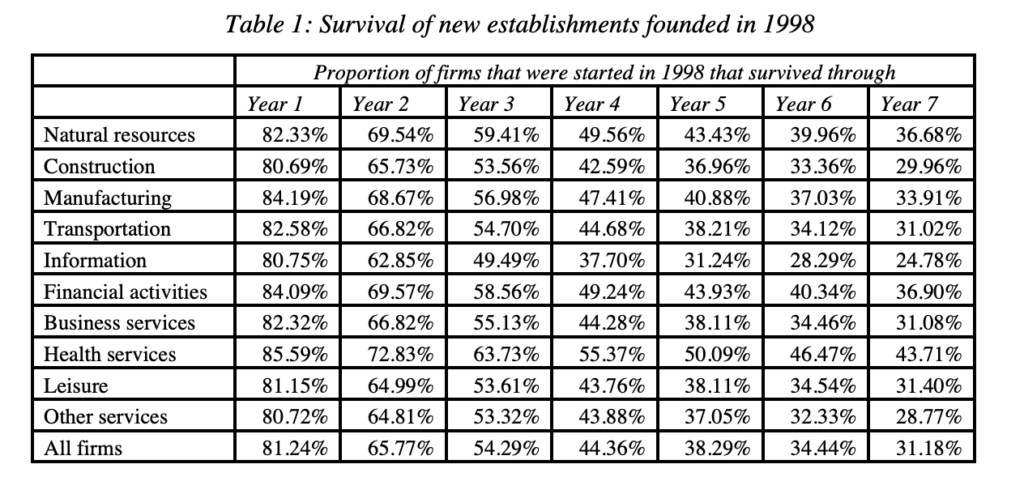The Harsh Reality of Business Survival and Market Leadership
The survival rate of businesses is a sobering statistic that often goes unnoticed. Data from the US shows that only 31% of new establishments founded in 1998 lasted for seven years. Even with a more optimistic view for listed companies, survival beyond a decade is challenging. This reality emphasizes the need for investors to carefully assess and adapt their strategies to navigate the ever-changing corporate landscape.
High Failure Rates: The Business Lifecycle
The survival rate for new establishments highlights the volatile nature of businesses. Within a decade, a significant percentage of companies either fail, are acquired, or lose their competitive edge. Even if the survival rate for listed firms is double that of unlisted ones, about 70% of businesses may no longer exist or retain their prominence after 14 years. Disruption from technology, competition, and changing market dynamics ensures that only a few companies sustain leadership over generations.

The Disruption of Market Leaders
History shows that market leaders often struggle to maintain dominance over the long term. For instance, examining the BSE 30 constituents from 1992 or the original Nifty50 composition from 1996 reveals that several companies no longer exist or have faded into irrelevance. Large, well-known corporations can also succumb to disruption if they fail to adapt to changing environments, as seen in industries transformed by technology or new competitors.
Blindly Following Large-Cap Names: A Risky Approach
While investing in large-cap companies may seem like a safe bet, it’s not a foolproof strategy. Today’s Nifty50 may include the best-performing companies now, but many could lose their prominence in the next decade. Disruptors, startups, and agile players continually challenge established companies, capturing market share and introducing innovation that reshapes industries. Without consistent reinvention, even the largest conglomerates risk stagnation.
Lessons for Investors
Diversify Beyond the Obvious: Avoid over-reliance on large-cap or well-known companies. Allocate part of your portfolio to emerging companies with potential for growth.
Monitor Disruption: Stay informed about trends and technologies that can disrupt existing businesses. Companies resistant to change are often the first to lose market share.
Look for Adaptability: Focus on firms with a proven ability to reinvent themselves. Leadership in innovation and agility are key indicators of long-term survivability.
Review Portfolios Regularly: The corporate landscape changes rapidly. Regularly reassess your investments to ensure you’re aligned with market realities and future opportunities.
The Role of Disruptors
Disruptors play a significant role in reshaping markets and replacing incumbents. Companies that dominate today may be replaced by new players in technology, healthcare, or other high-growth sectors. Investors should maintain an open perspective, recognizing that tomorrow’s winners might not even exist today.
WeekendInvesting launches – PortfolioMomentum Report
Momentum Score: See what percentage of your portfolio is in high vs. low momentum stocks, giving you a snapshot of its performance and health.
Weightage Skew: Discover if certain stocks are dominating your portfolio, affecting its performance and risk balance.
Why it matters
Weak momentum stocks can limit your gains, while high momentum stocks improve capital allocation, enhancing your chances of superior performance.
Disclaimers and disclosures : https://tinyurl.com/2763eyaz










